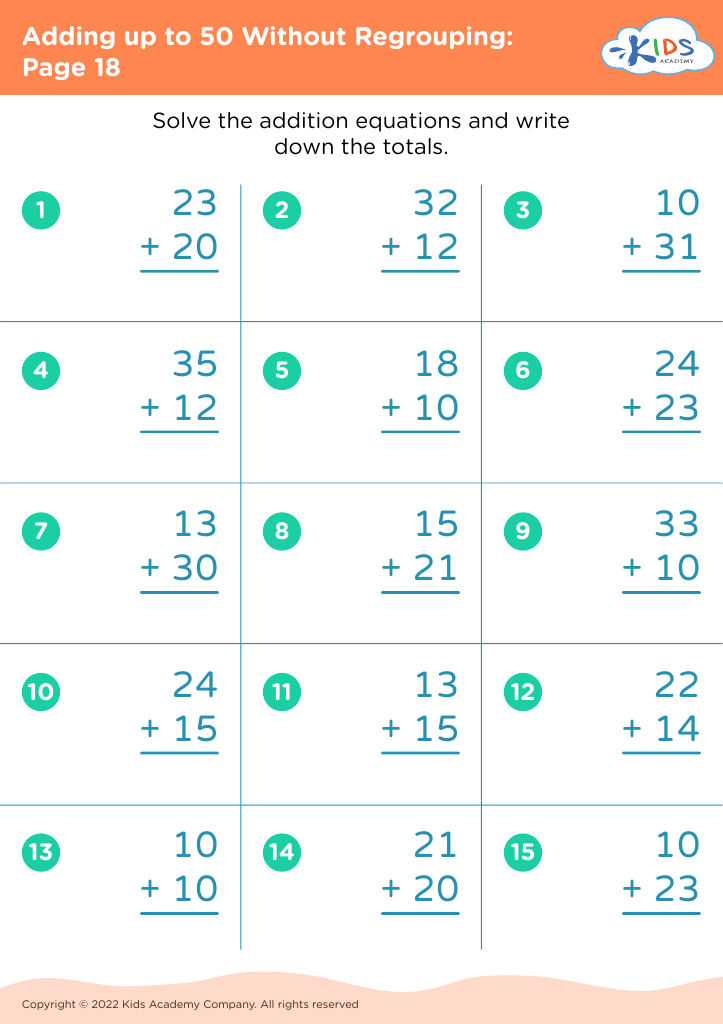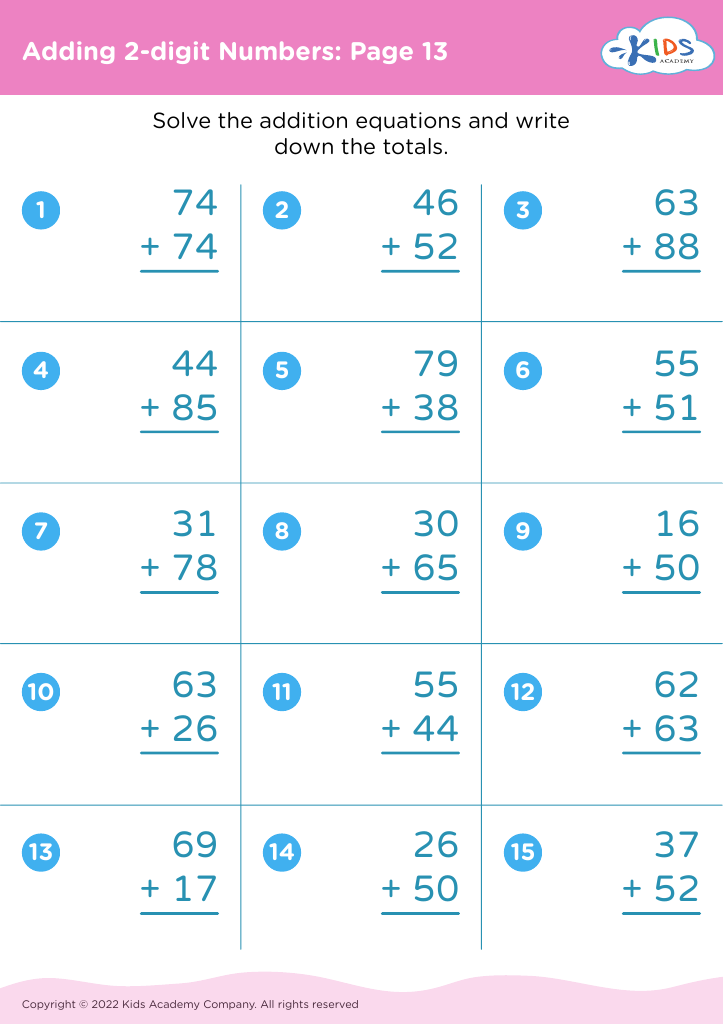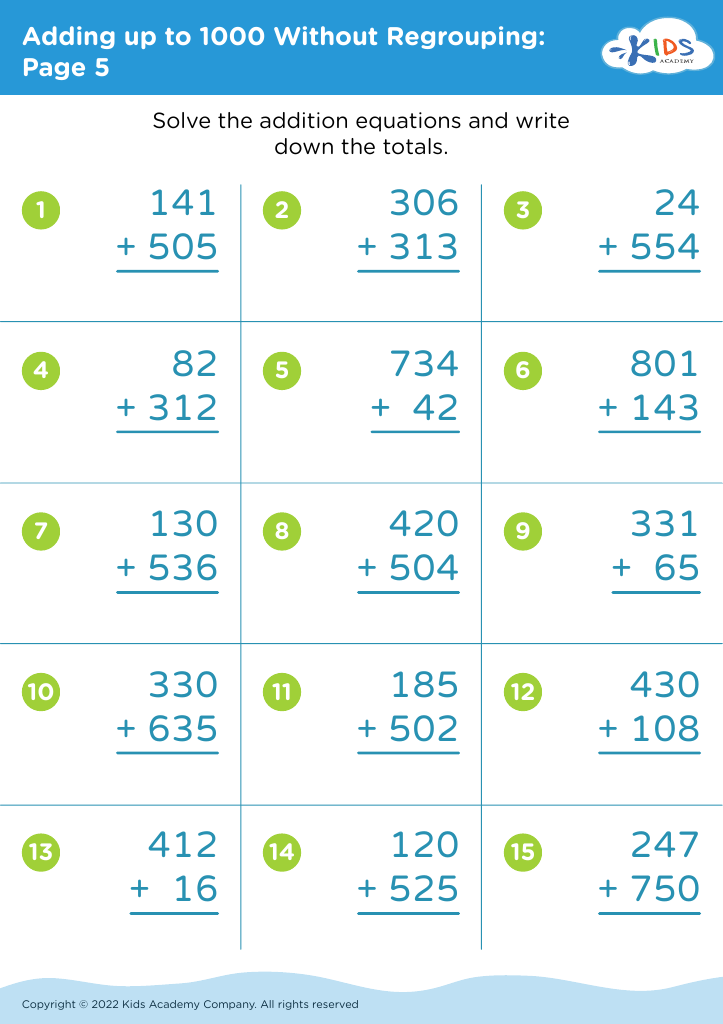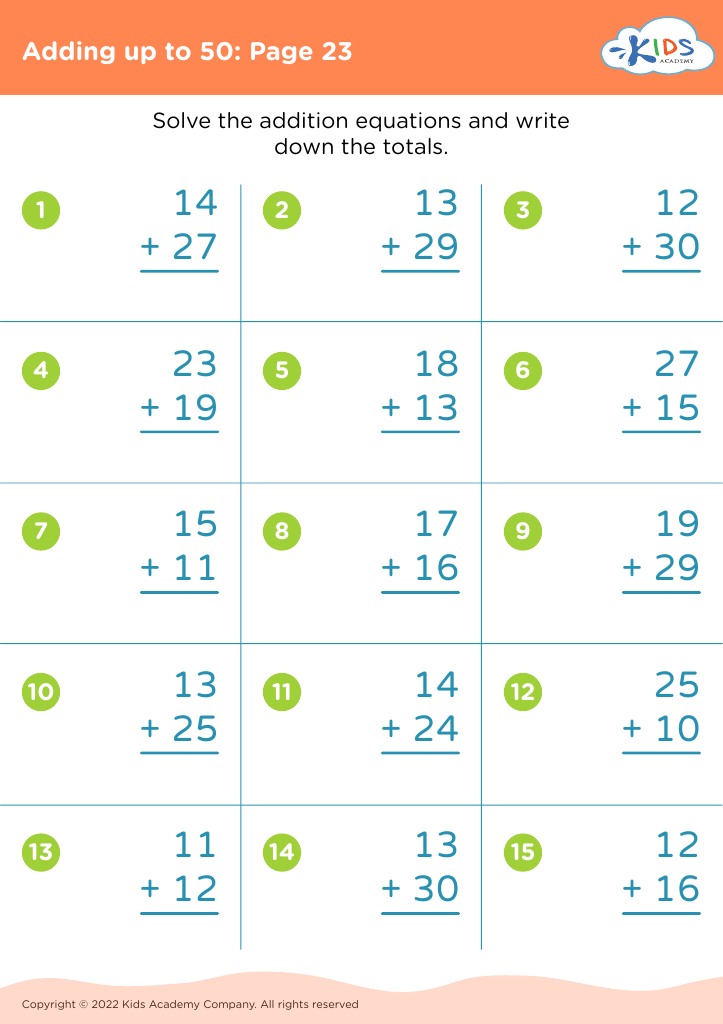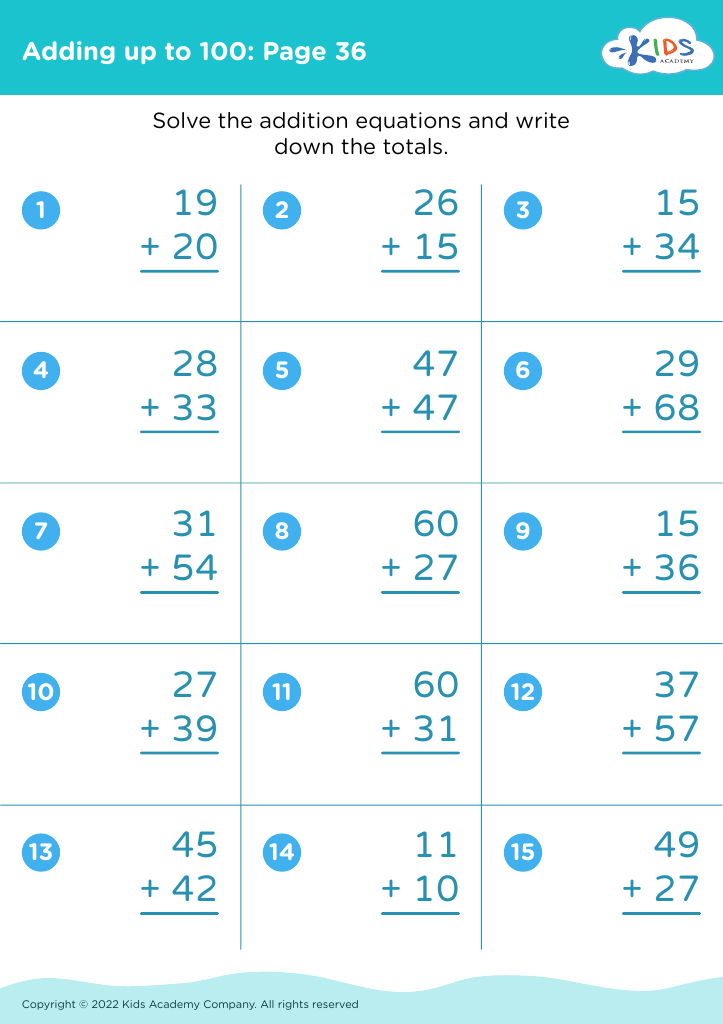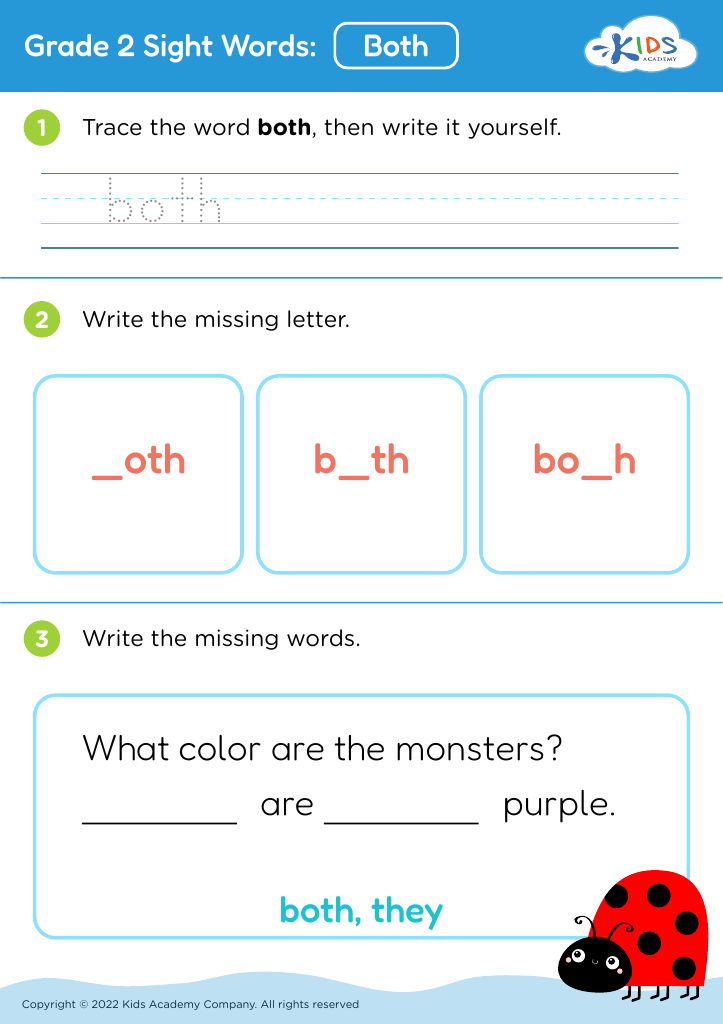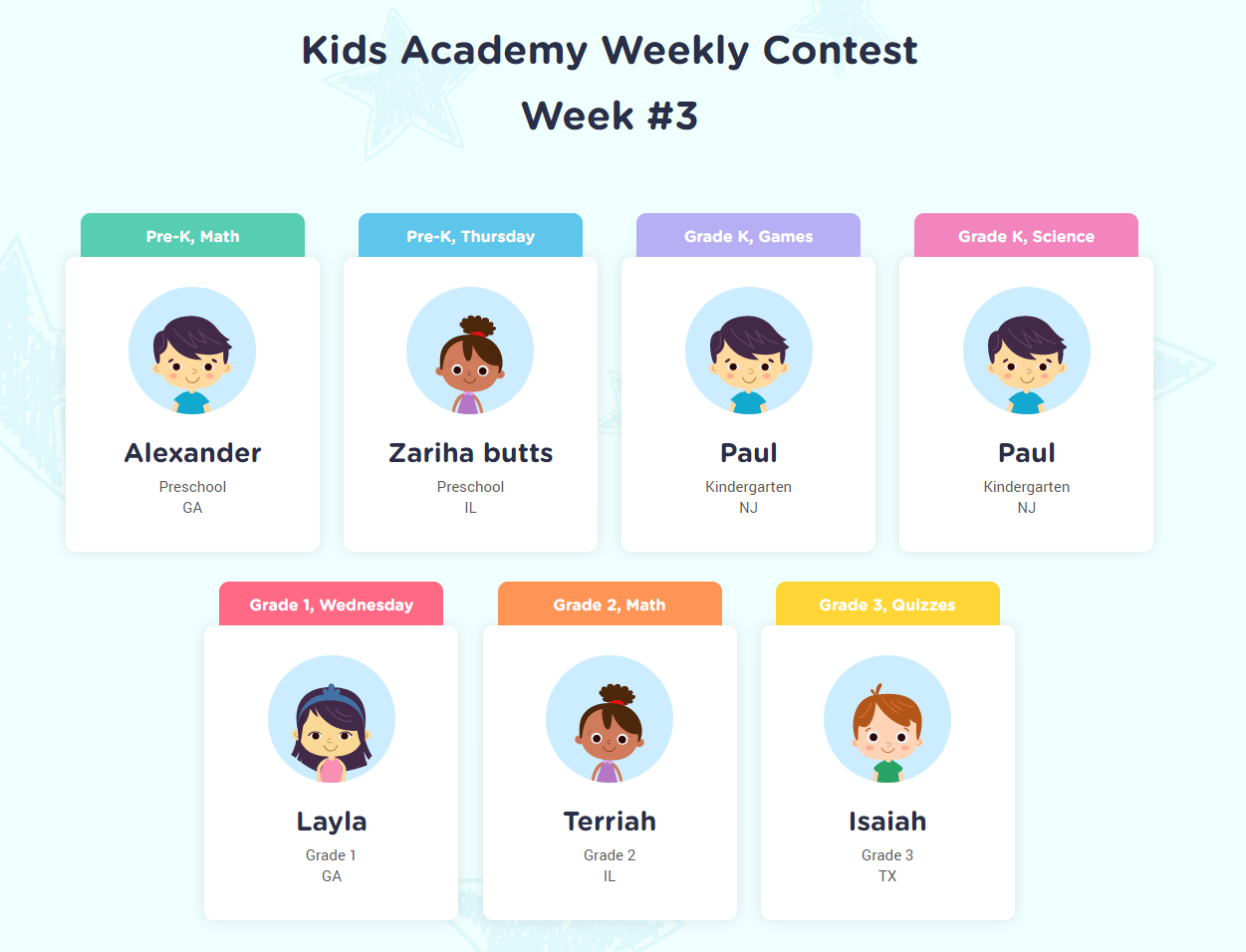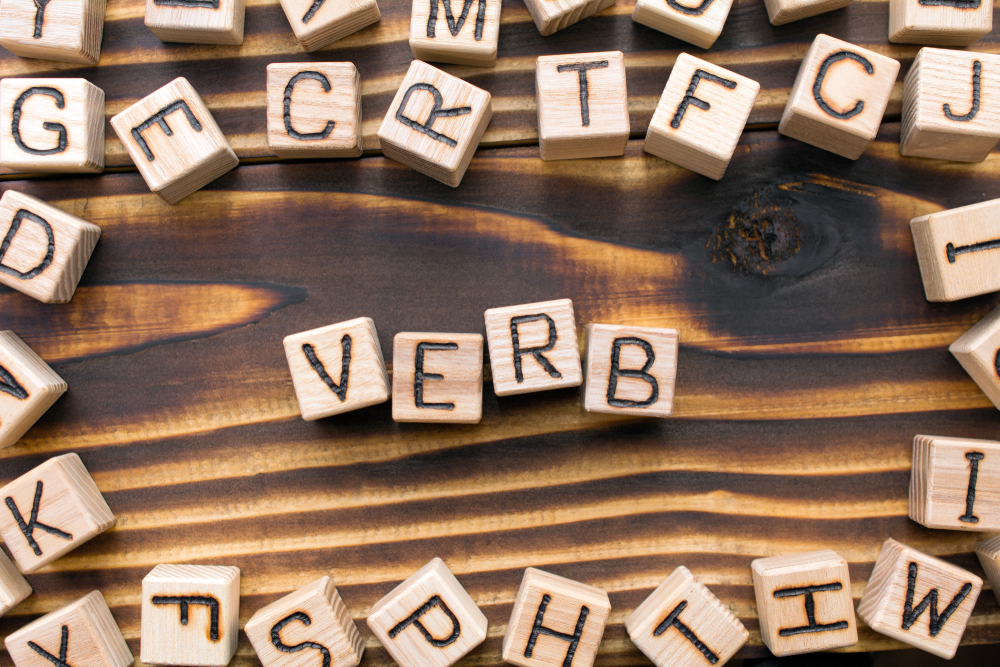Visual representation comprehension Worksheets for Ages 8-9
10 filtered results
-
From - To
Unlock the power of visual learning with our comprehensive Visual Representation Comprehension Worksheets designed for ages 8-9. These engaging worksheets help children develop critical thinking and understanding by interpreting graphs, charts, and diagrams. Each activity encourages kids to analyze visual data, boosting their skills in problem-solving, reading comprehension, and math. Perfect for classroom or at-home learning, our worksheets are crafted to make learning fun and interactive. Watch as your child enhances their ability to decode visual information and apply it across various subjects with confidence and ease. Explore our collection today!
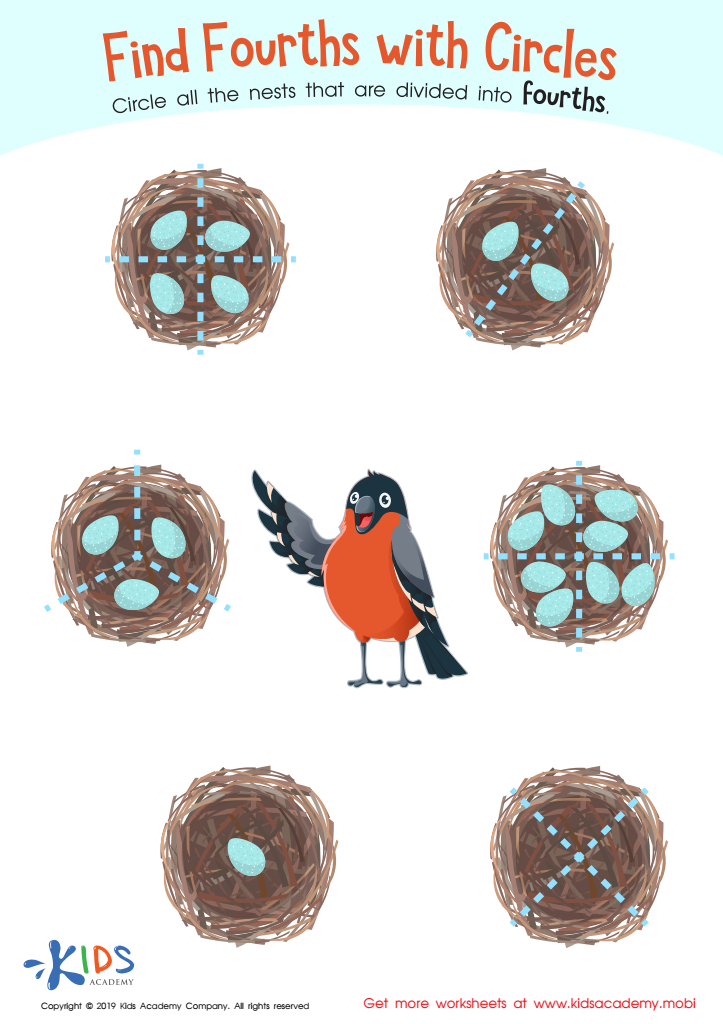

Find Fourths Circles Worksheet
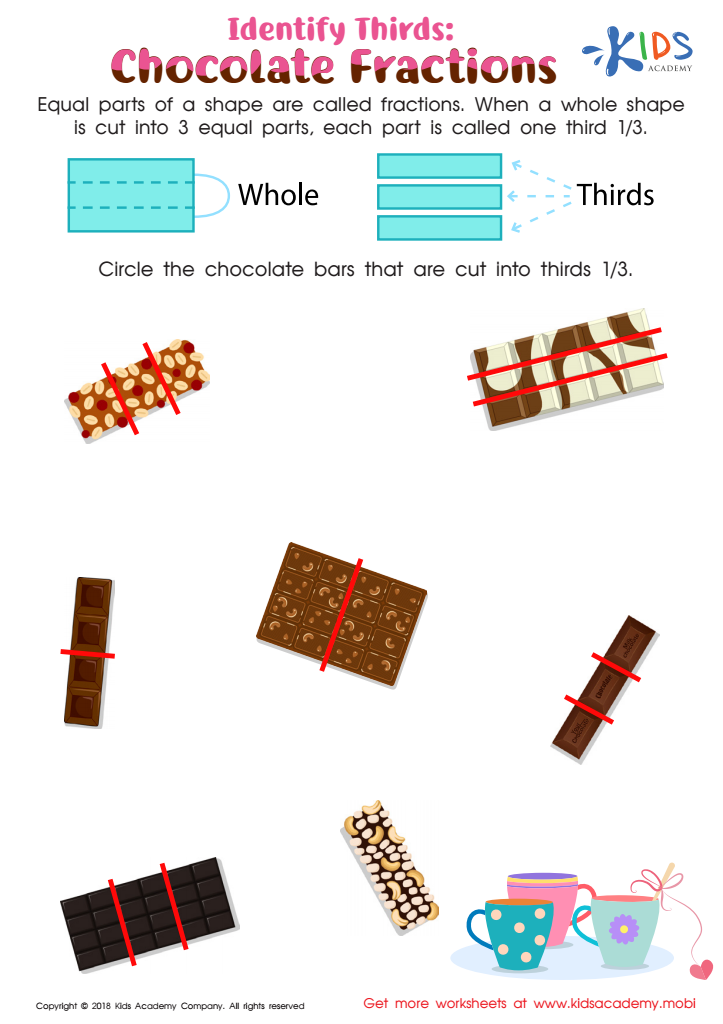

Identify Thirds: Chocolate Fractions Worksheet
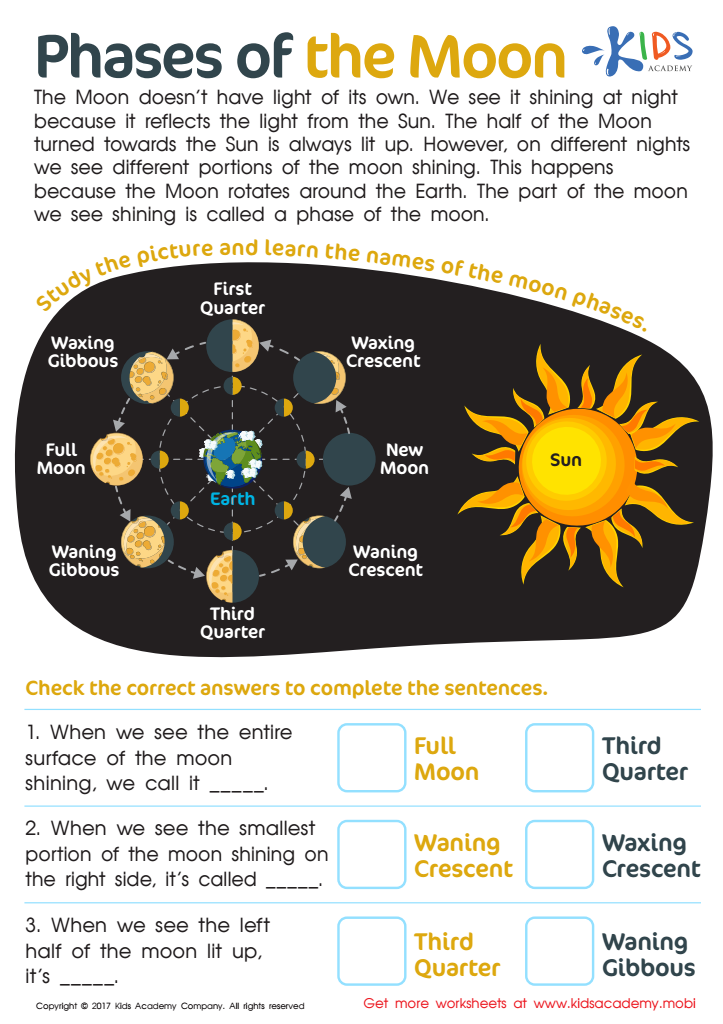

Phases of The Moon Worksheet
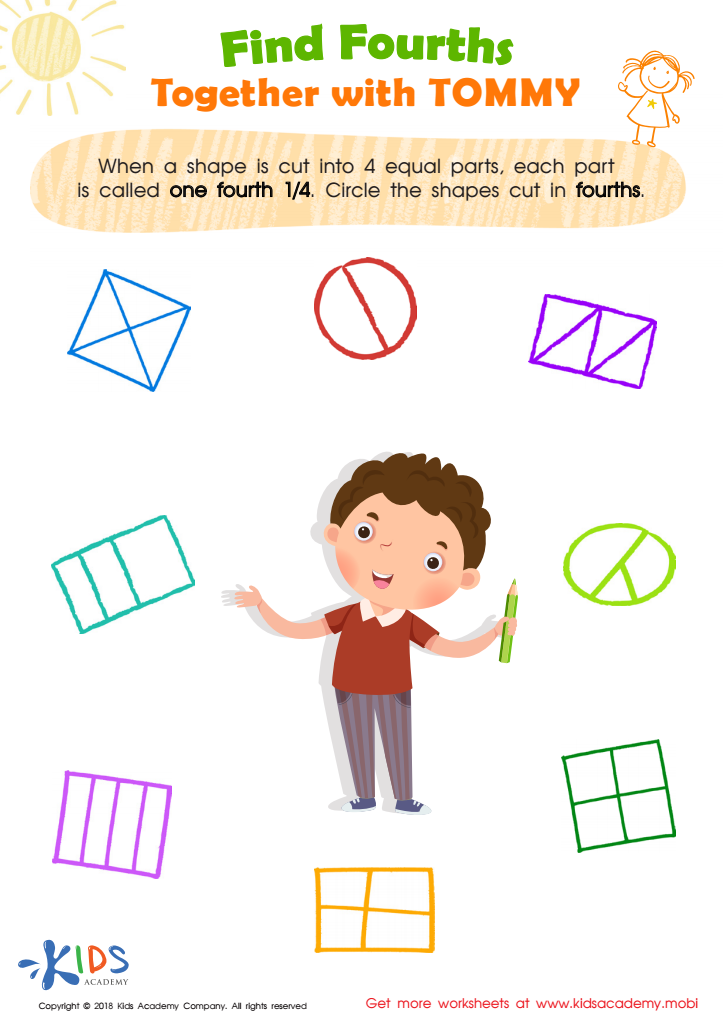

Find Fourths Together with Tommy Worksheet
Visual representation comprehension is crucial for children aged 8-9 as it plays a significant role in their cognitive development and learning process. At this age, kids are transitioning from concrete to more abstract thinking. Visuals like charts, graphs, maps, and diagrams help bridge this transition, making complex information more accessible and understandable.
Firstly, visual aid enhances memory retention. Children are more likely to remember and recall information that is presented visually compared to text alone. This is particularly important for subjects like math and science, where concepts can be abstract and difficult to grasp.
Secondly, fostering visual literacy at an early age promotes critical thinking. When children learn to interpret and analyze visual data, they develop skills in viewing information from multiple perspectives and making deductions, vital for problem-solving.
Additionally, the world today is steeped in visual media. Proficiency in decoding visual information prepares children for tech-driven futures where they will need to navigate information presented through digital means, like websites and apps, which often rely heavily on visual content.
Lastly, visual representation supports diverse learners. Children have different learning styles, and visual aids can be especially helpful for those who struggle with traditional text-based content.
Therefore, parents and teachers should prioritize enhancing visual comprehension to foster richer learning experiences and essential life skills.
 Assign to My Students
Assign to My Students
